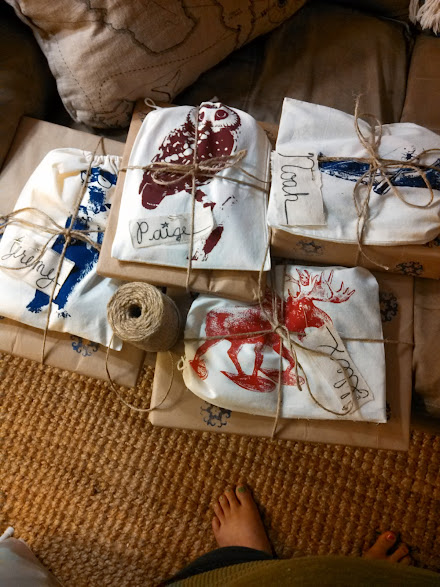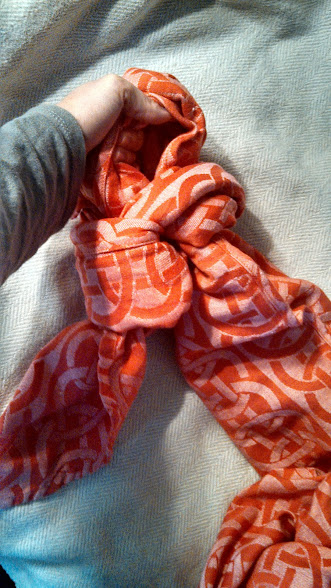This is a quick, non-thorough, non-comprehensive summary as to why you need to STOP COOKING WITH ALUMINUM FOIL right now. No, not when the roll is gone. No, not when you have time to "figure it out." Now.
Why?
The most convincing argument I've found is THIS study published in the peer-reviewed International Journal of Electrochemical Science. It's 12 pages and quite readable, as far as scientific journal publications go. I took the time to read it. Really, really read it. I majored in biomedical engineering and cannot possibly buy into a journal article without combing it over. The science and math is pretty impeccable and convincing for me as a consumer, mother, and cook.
Here's the abstract and about all you really need to know:
The results clearly indicate that the use of aluminum foil for cooking contributes significantly to the daily intake of aluminum through the cooked foods. The amount of leaching was found to be high in acidic solutions, and even higher with the addition of spices. According to the World Health Organization (WHO), the obtained values considered to be unacceptable.Finally, excessive consumption of aluminum from leaching aluminum foil has anextreme health risk effects. Aluminum foil may be used for packing but not for cooking.
Through a variety of experiments, they determined that for most foods cooked with or near foil, the amount of aluminum that leaches into the food is significant. Of course, it is dependent on serving size, but the article discusses how easily one could ingest far more than the maxium 1mg of aluminum per 1kg of body weight recommended by the World Health Organization.
Furthermore? Cooking is not generally our only exposure to aluminum. Some estimates show that without cooking with foil, we already are exposed to amounts greater than the WHO recommendation.
Ok, what else? Well the toxicology report was released in 1996 on aluminum. It's ridiculously long (393 pages) and can be found HERE. I'll be honest and admit that I haven't read the entire report.
What I have found so far is the answer to the comment, "Everything in moderation." No, sorry, cooking with foil does not count. Here's why:
So what? Why is it so bad?You are always exposed to some aluminum by eating food; drinking water, ingesting medicinal products like certain antacids and buffered analgesics that contain aluminum, or breathing air. You may also be exposed by skin contact with soil, water, aluminum metal, antiperspirants, food additives (e.g., some baking powders) or other substances that contain aluminum Analytical methods used by scientists to determine the levels of aluminum in the environment generally do not determine the specific form of aluminum present. Therefore, we do not always know the form of aluminum a person may be exposed to.
Sometimes these people developed bone or brain diseases that doctors think were caused
by the excess aluminum. Some studies show that people exposed to high levels of aluminum may develop Alzheimer’s disease, but other studies have not found this to be true. We do notknow for certain whether aluminum accumulation is a result of the disease or its cause.
And for our children?
Children may be exposed to high levels of aluminum in drinking water. Brain and bone disease have been seen in children (...) Bone disease has also been seen in children taking some medicines containing aluminum.
The toxicology report also details how to avoid other sources of aluminum and lists: processed foods containing aluminum additives, cooking acidic food in aluminum pots and pans, antacids, buffered aspirin, and soy-formula for babies (Page 7).
Page 29 talks about the neurological effects of inhaled aluminum noting:
...significant correlations between urinary aluminum levels and memory test performance and between plasma aluminum levels and visual reaction time tests were found. Additionally, quantitative EEG changes, similar to those found in patients with aluminum encephalopathy, were also found in the welders. Hosovoski et al. (1994) and Sjogren et al. (1990) also found significant alterations in performance tests assessing reaction time, eye-hand coordination, memory, and/or motor skills in aluminum foundry workers and aluminum welders, respectively, and Rifat et al. (1990) found impaired performance on cognitive tests in miners exposed to McIntyre powder. Higher incidences of subjective neurological symptoms (e.g., incoordination, difficulty buttoning, depression, fatigue) were reported in two studies of aluminum potroom workers at an aluminum smelter (Sim et al. 1997; White et al. 1992) and in a study of aluminum welders (Sjiigren et al. 1990).
So by know, you're potentially crying out, "ALRIGHT! I GET IT! NOW WHAT?"
Well, let's start with a quick summary:
1. Foil is not for heating on or near foods, especially acidic foods.
2. Foil may safely be used as food packaging for non-acidic foods, as long as it is removed before heating.
3. Time to throw out aluminum cookware and utensils.
How to live without it?
1. Parchment paper! A great eco-friendly, non-toxic option for lining the bottom of your pans.
2. Silpats. These are thin, silicone lined mats that nothing can stick to! Some people debate the safety of cooking with silicone, but as of now, there are no recognized safety issues.
3. Creativity.
Examples: I used to cook my ribs in foil packets. Now I cook them in a deep baking pan with a cookie sheet as a lid. I get an impressively tight seal with this method, but you can always weight the cookie sheet down with a glass dish or piece of stoneware.
Pie crust burning? Pick up a steel or silicone shield.
Parchment or baking paper can also be tented over the top of baked goods to keep them from burning when you'd traditionally use a foil tent.
I do quite a lot of cooking and not a lot of baking but we haven't used foil for cooking in over two years. Holler if you have a conundrum with eliminating foil from a recipe!































